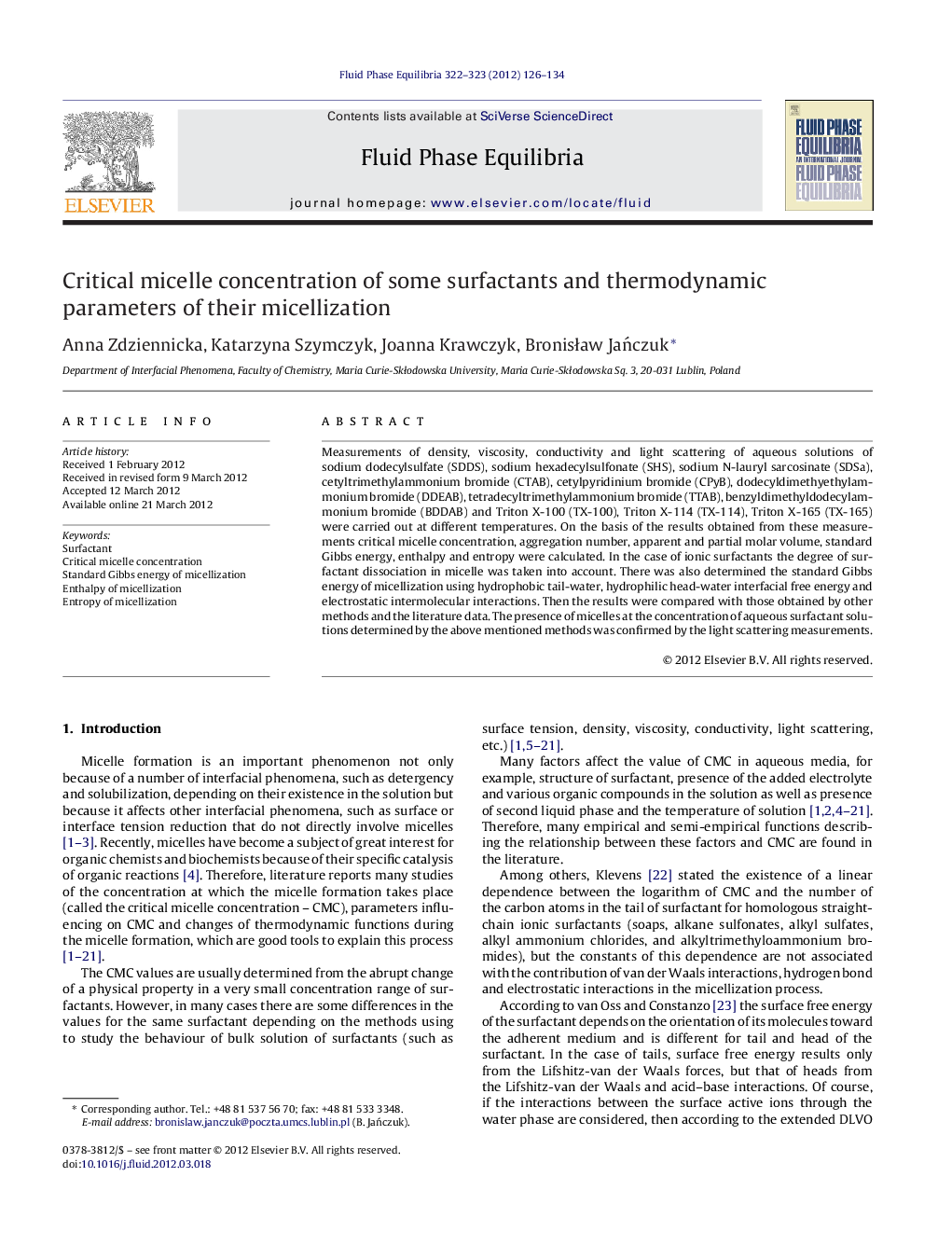| Article ID | Journal | Published Year | Pages | File Type |
|---|---|---|---|---|
| 204215 | Fluid Phase Equilibria | 2012 | 9 Pages |
Measurements of density, viscosity, conductivity and light scattering of aqueous solutions of sodium dodecylsulfate (SDDS), sodium hexadecylsulfonate (SHS), sodium N-lauryl sarcosinate (SDSa), cetyltrimethylammonium bromide (CTAB), cetylpyridinium bromide (CPyB), dodecyldimethyethylammonium bromide (DDEAB), tetradecyltrimethylammonium bromide (TTAB), benzyldimethyldodecylammonium bromide (BDDAB) and Triton X-100 (TX-100), Triton X-114 (TX-114), Triton X-165 (TX-165) were carried out at different temperatures. On the basis of the results obtained from these measurements critical micelle concentration, aggregation number, apparent and partial molar volume, standard Gibbs energy, enthalpy and entropy were calculated. In the case of ionic surfactants the degree of surfactant dissociation in micelle was taken into account. There was also determined the standard Gibbs energy of micellization using hydrophobic tail-water, hydrophilic head-water interfacial free energy and electrostatic intermolecular interactions. Then the results were compared with those obtained by other methods and the literature data. The presence of micelles at the concentration of aqueous surfactant solutions determined by the above mentioned methods was confirmed by the light scattering measurements.
Graphical abstractThe comparison of theoretical values of ΔG of interactions with those obtained by different experimental methods.Figure optionsDownload full-size imageDownload as PowerPoint slideHighlights► There is no direct correlation between the dissociation degree and aggregation number. ► Tendency of surfactants micellization can be predicted from their surface tension data. ► Klevens equation constants can be calculated from the surfactant interactions through the water phase.
